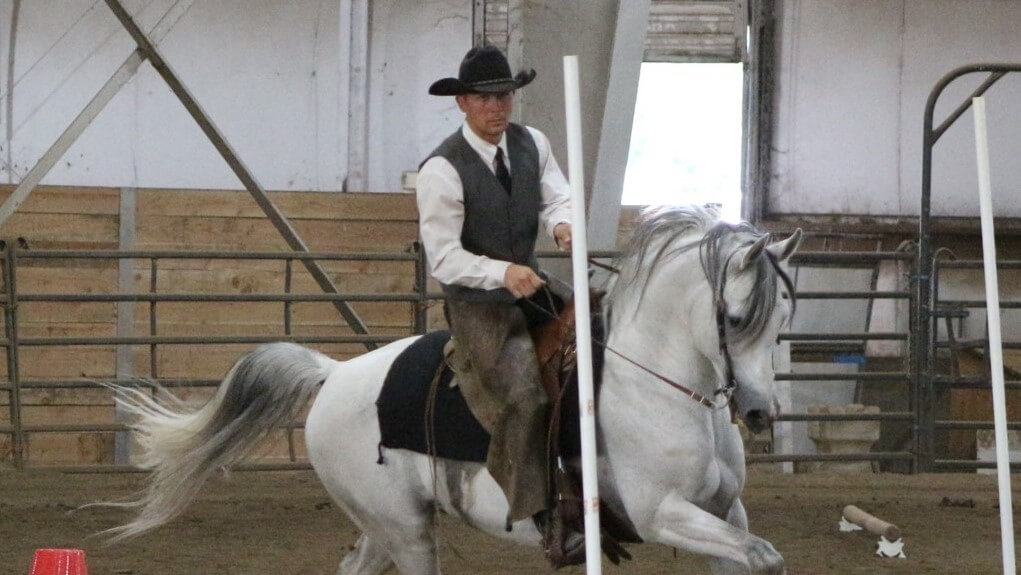I first saw the versatile Arabian stallion Kalaloch+ at a working equitation show in 2019. I was so impressed by his movement, temperament, and beauty that I friended his owner Shelly Brown on Facebook so I could keep up with both of them. I’ve since learned that he’s been a very successful Arabian show horse and sire.
The + sign after Kalaloch’s name means he is the recipient of a merit award (Legion of Honor) from the Arabian Horse Association (AHA). For our January Breeding and Buying issue I thought it would be interesting to reach out to Shelly and get her input on the breeding business and stallion ownership.
How long have you been a horse owner? How long have you been involved in horse breeding?
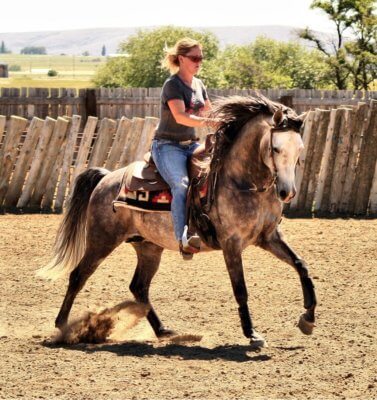
My family got our first horse when I was about 10. Joe was an older Quarter Horse gelding who packed my sisters and me around for years. While he was our first, there were many more after him. We participated in 4-H and later junior rodeo – some of my best childhood memories.
I was horseless for about 25 years after I divorced. In 2004, my 8-year-old son spent a couple of weeks during the summer with his cousins while they were showing at the fair—he was hooked! When he came home, we started searching for his first horse. We found her at a rescue—thin, but willing and wanting to please. As we were driving home with her in the trailer my son decided he would call her Lucky. He felt she was lucky to be coming home with us while all the other horses were still hoping to be rescued to avoid being shipped to slaughter.
Lucky was the first Arabian I owned. I grew up with Quarter Horses and stock horses in general. That mare taught me how much a horse can bond with a human. Despite the many horses I’d owned, I’d never had one who bonded with me like her.
And since I had little knowledge of Arabians, I had no clue when we bought her how well-bred she was, or that she was a “pure Polish” Arabian. As she stole my heart, I started researching her pedigree. Within a few years, I knew I wanted a foal from her. While I never got that foal, she ignited my passion for breeding.
Is Kalaloch+ your first breeding stallion? When did you acquire him?
I never intended to own or promote a breeding stallion. By 2010, I’d acquired several well-bred, mostly pure Polish mares I hoped to breed. Through my Arabian connections, I learned there was a young pure Polish Piaff son in my state looking for a new home. I drove across the state in the middle of winter to see him and it was love at first sight. I knew he would be the perfect stallion for my mares and I quickly began making plans for our future together.
I had never even handled a stallion, let alone owned one. I am fortunate that Kalaloch+ (pronounced Klay-lock), aka Klay, is an exceptionally good-tempered stallion who never gave me any grief despite my inexperience.
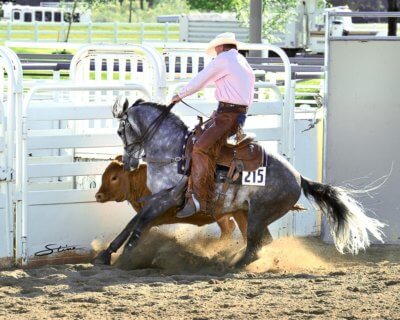
Do you have a farm/ranch?
I have a small ranch in Central Washington where I keep some broodmares and foals.
What is your motivation for being involved in the breeding industry?
Being a methodical, analytical person, I love the research that goes into breeding. I love studying pedigrees—what the horses in the pedigree bring to an individual as well as studying “nicks” or crosses for what works (and what doesn’t).
What advice would you give people who are considering standing a stallion at stud?
I don’t think standing a stallion is for everyone. First, it is expensive to prove a stallion in the show ring. Second, not everyone will be supportive. And finally, it takes a lot of time to keep your stallion front and center while trying to attract mare owners. Good pictures are an absolute must. Never, ever, post photos that do not depict your stallion in the best light possible.
What common misperceptions do people have about stallions?
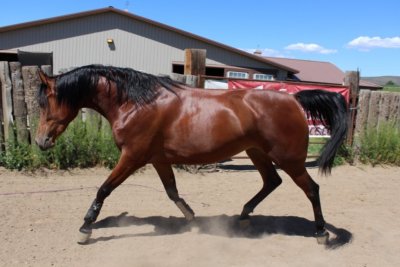
Stallions, if properly socialized and trained, are the same as any other horse. They should be capable of being in the same situation you would put a mare or a gelding in. Klay has shown at AHA, NRCHA (National Reined Cow Horse Association) and Working Equitation shows. Most people who meet him tell me they would never have known he was a stallion because he is so well behaved. Stallions should behave as any other horse. A good tempered, appropriately trained stallion will give the appearance of a well-trained gelding. Stallion owners should expect no less.
What do you wish mare owners who are considering breeding their mare would do or understand?
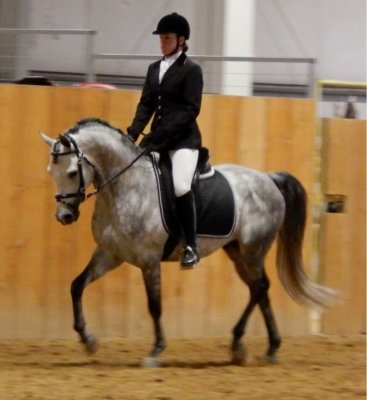
Breeding is a science. It’s not a given. As reproductive science has improved, we have tools we can utilize to better achieve our goal of producing a foal. It’s expensive to breed. Each time we breed, the expense to produce the foal increases. Doing it right from the start saves money in the long-term.
Use a well-qualified reproductive veterinarian and/or theriogenologist, if you can. While it sometimes requires more money to use a specialist, getting a pregnancy in one cycle versus two, three, or none is well worth the extra cost you may pay for the specialist veterinarian.
Make sure your mare is clean before breeding (culture and cytology). Make sure she is reproductively sound (able to conceive and carry to term). Set a limit for what you are willing to invest in the breeding process (veterinary fees, etc.) before you begin the process. It’s really easy to dump a couple thousand dollars in and then get the feeling you have to keep dumping more because you’ve already invested so much. The amount of money spent does not always produce a foal. Consult with your repro vet each time you breed so that you have good guidance.
Describe the perfect mare owner. Ideal mare?
The perfect mare owner is one who appreciates the breeding process. Not all mares are fertile Myrtles. And not all veterinarians are equal, especially when it comes to reproduction. A perfect mare owner knows that her chance of a successful pregnancy goes up significantly when he/she uses the most qualified reproductive vet available.
Where is Kalaloch+ standing? How old is he? Do you ride him?
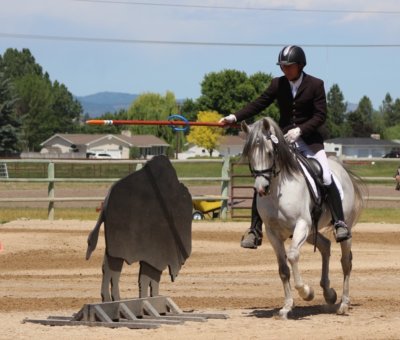
Kalaloch+ will be standing at McKinlay & Peters Equine Hospital in Spokane, a Select Breeders Services facility, in 2021. He will be 14 next year.
While I don’t get to see him or ride him as often as I would like, I do enjoy riding him when I can. He is one of those horses who can sit for six months and then have someone throw a saddle on him and he would still do his best to give the best ride possible. Klay is a horse that pretty much anyone can ride. While I only ride a couple of times a year, he always takes care of me.
I know you’ve shown him extensively. Do you have anything to say about the experience of showing a stallion?
When it comes to showing a stallion, there is the added benefit that people take notice because he’s a stallion. I remember when Klay showed at Arabian Nationals, I had people who hunted me down to meet him and cheer him on. They knew of him but wanted to see him in the flesh and were so excited to join in his success.
When he showed in Working Equitation, he developed a reputation as the Arabian stallion who was wicked fast in the speed tests. People would track me down to meet him and watch him show. He definitely had a following that I’m not sure a mare or gelding would enjoy.
I’ve also thoroughly enjoyed each and every person who has taken time out of their day or weekend to come meet him at a show or at his barn. While there are so many special horses that people want to meet in the flesh, I think stallions have a unique opportunity to draw potential mare owners, or simply lovers of the breed, to come see them, evaluate them and ultimately pass judgement on their worthiness to contribute to the breed — an honorable achievement, in my opinion.
See this article in the 2021 January online edition:
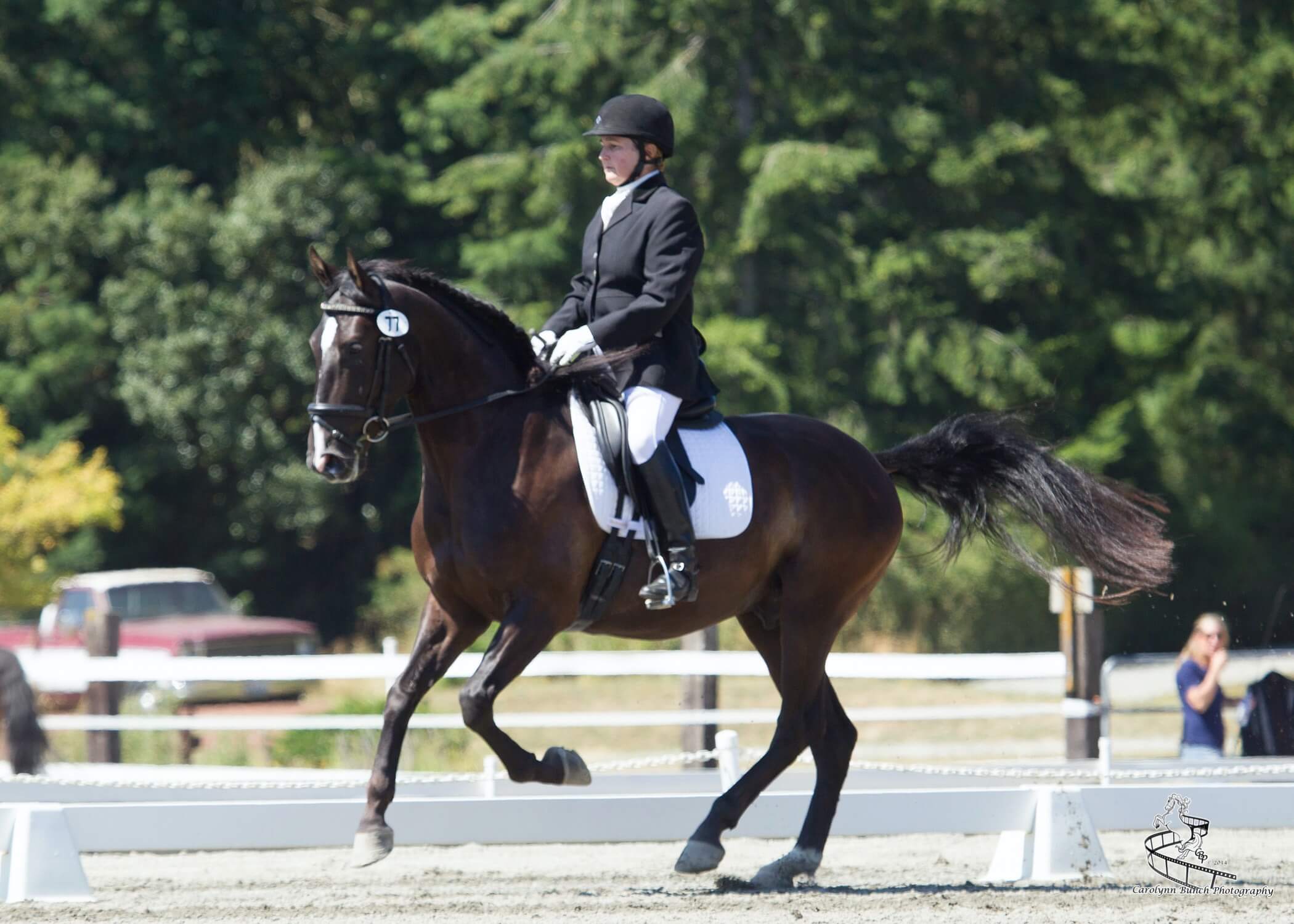
Kim Roe grew up riding on the family ranch and competed in Western rail classes, trail horse, reining, working cow, and hunter/jumper. She trained her first horse for money at 12 years old, starting a pony for a neighbor.
Kim has been a professional dressage instructor in Washington state for over 30 years, training hundreds of horses and students through the levels. In recent years Kim has become involved in Working Equitation and is a small ‘r’ Working Equitation judge with WE United.
Kim is the editor of the Northwest Horse Source Magazine, and also a writer, photographer, and poet. She owns and manages Blue Gate Farm in Deming, Washington where she continues to be passionate about helping horses and riders in many disciplines.





